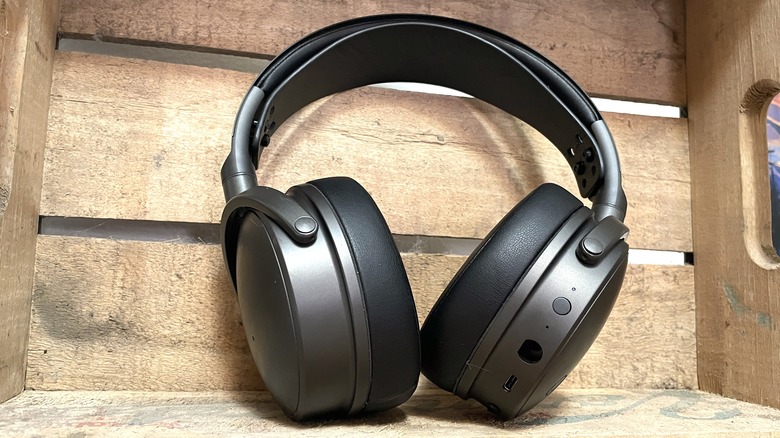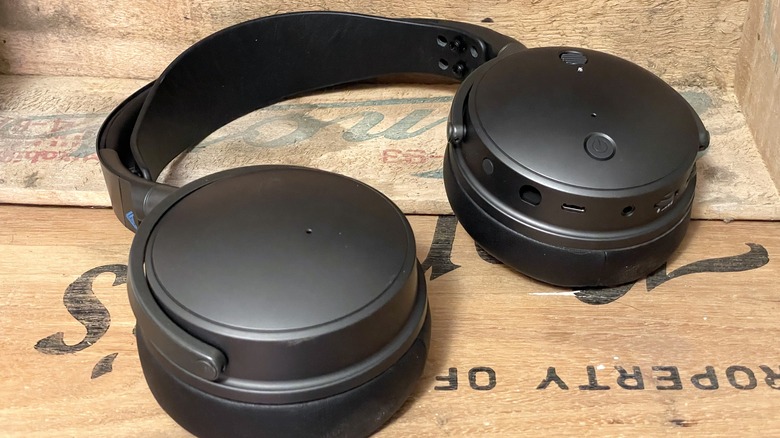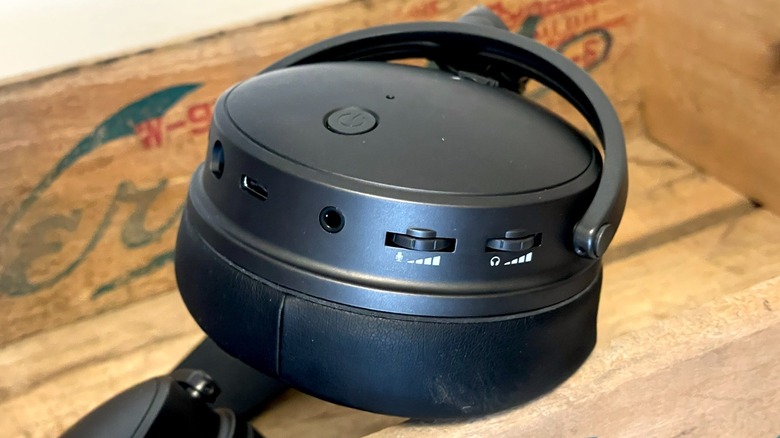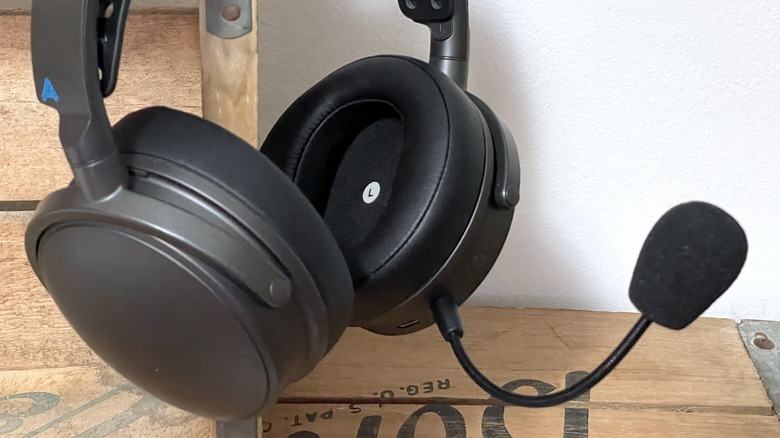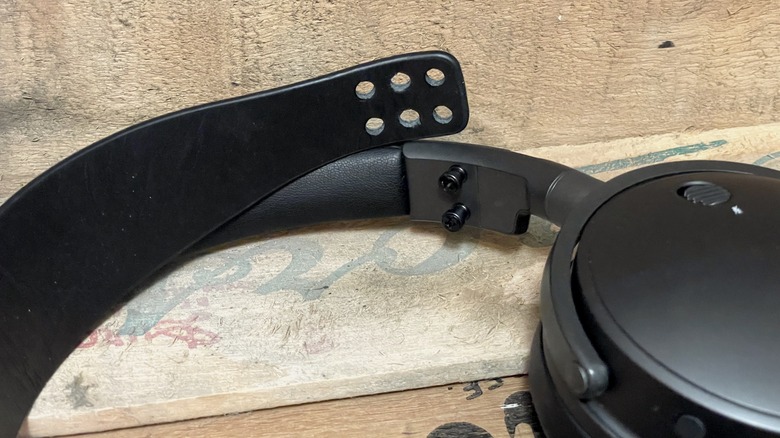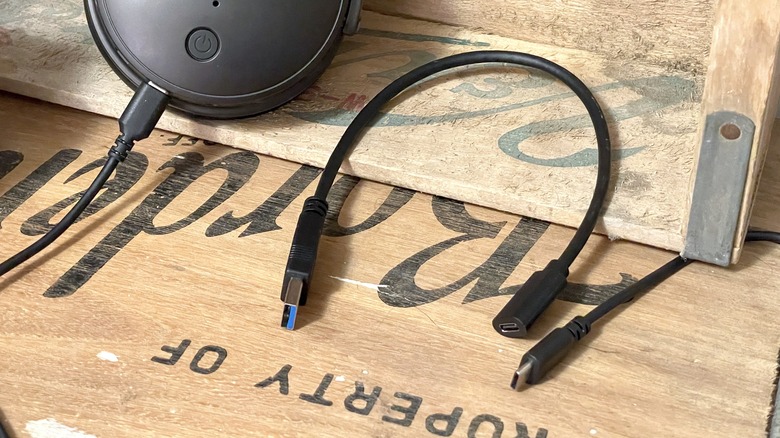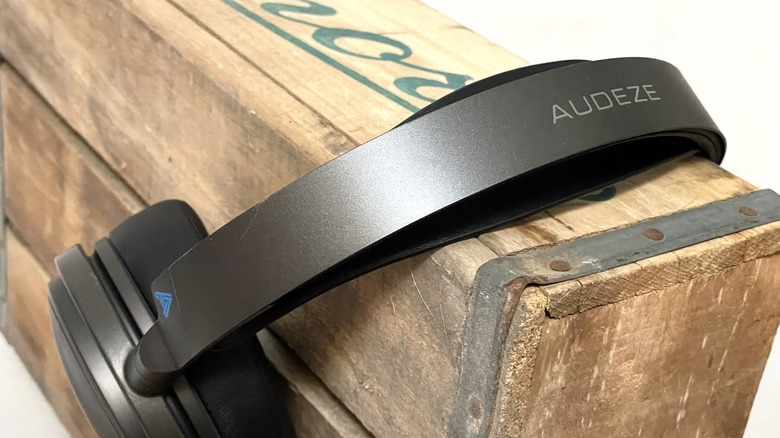Audeze Maxwell Review: Wireless Gaming Headset Delivers A Very Nice Surprise
- Slick presentation and easy setup
- Very nice sound and recording quality
- Precise volume control and sound suppression
- Connects to multiple devices with no problems
- Requires included adapter to charge to USB-A or A/C
- Integrated voice is quite loud (but can be adjusted with app)
We may receive a commission on purchases made from links.
In all honesty, when I first opened the box for this Audeze Maxwell wireless gaming headset, I wasn't expecting much. My assumption was that it would be something like a slightly fancier version of the last high-end headphones I reviewed. So it was a nice surprise to be so impressed by the quality I heard, once I started listening to audio across multiple devices and performing some recording tests with this headset.
Much like my experience with Logitech's G Astro A30 gaming headset, the time I've been able to spend with this new Maxwell headset (specifically the PlayStation version) has been unexpectedly eye-opening to the point that it's made me question my perception of the former. Now, I don't believe I was wrong in what I said about the A30s — it's just that this Maxwell wireless headset does it all a little bit better. Or a lot better in one particular case.
Audeze provided SlashGear with a Maxwell wireless gaming headset (the PlayStation model) for the purpose of this review.
Getting started
Aside from the somewhat lush box and, of course, the headset itself, the set also includes an external microphone attachment, a USB-C wireless dongle, a USB-C cable, an adapter for connecting USB-C to USB-A (the more "classic" USB option), and a 3.5mm AUX cable. It's a lot of accessories that not everyone is going to need, but they all serve a purpose in one context or another.
The wireless dongle was particularly necessary for me since part of this test involved using this headset with a PlayStation 4, a console that doesn't support Bluetooth audio, but it was really simple to connect and test out. After daisy-chaining it together with the USB-A adapter I just had to plug it into a free USB port on the console, then dive into the System menu and push the Pairing button on the headset to find and connect to it. I would've preferred not needing the dongle at all, but that's Sony's doing and not the fault of Audeze or the Maxwell headphones.
Outside of dongles, connecting to devices that do support Bluetooth audio was a breeze. As with most similar devices, it only took a few seconds to press the Pairing button and find the headphones in each of their respective menus. As a bonus, unlike the A30s I didn't have to use a specific app to switch between multiple devices. Though without one I do still have to manually choose the Maxwell headset from a menu when connecting to my Switch.
Sounds like a winner
While I was definitely impressed with the sound quality of the A30s, I'm even more impressed with what I've been hearing from the Maxwell headset. The overall sound comes through a bit sharper and more clearly, while the volume dial (instead of the A30's buttons) offers what at least feels like more precision over how loud or soft everything hits my ears. And while this particular headset doesn't offer noise-canceling, the thick padding does keep the outside world from encroaching on my listening. Most of the time.
Though I am a bit disappointed that a couple of the audio control features that stood out to me on the A30s aren't present here. For instance, there's no built-in play or pause button so I can't stop or resume music or a video if I'm away from whatever device I'm connected with. It's also a bit odd to me that the A30's used the built-in mic to let outside noise through, but it was a function you could manually switch off — and there's no such feature on the Maxwell headphones. It's not a significant problem except when I'm attempting to feel for the Bluetooth button and accidentally brush a finger over the microphone opening only to get an earful of muffled thumping noises.
UPDATE: This article previously stated that this set of headphones did not have a toggle for in-ear microphone output (side tone) — this feature can be switched off by double-clicking the lower control wheel with the microphone icon. This article also previously stated that there was no play/pause button on the headset — the power button performs this function with a single click when connected to a compatible device.
The microphone's pretty good, too
Hands down the biggest improvement for me between my last headset review subject and this one is the microphone. The Maxwell's recording quality — both for the built-in mic and the external attachment — is significantly better than what I'd previously experienced. Outgoing audio also records at a more manageable volume, whereas before I usually had to manually make everything louder in editing software if I planned to use it for a project. Not that the Maxwell audio requires zero manipulation after the fact, but it definitely requires a whole lot less.
Using that external attachment, though? It's like an extremely rough night compared to a particularly glorious day (or swap that if you prefer staying up late). I've been struggling for some time — due to my own laxness, I'll admit — to figure out an audio recording solution for my amateur YouTube channel that both sounds at least somewhat natural and also doesn't pick up the near-constant cacophony surrounding our small apartment. This is hands-down the best option I've come across so far, though as I've said I haven't been pushing myself particularly hard to find the perfect answer to my problem.
Point is, if the recording quality of the built-in microphone was the best I could get out of the Maxwell Gaming Headset I'd be really happy. Since it's even better with the attachment, it's a win. And as a bonus, it's easy to toggle the AI-assisted noise suppression between Off, Low, or High with one button press, and there's a separate dedicated control dial just for microphone volume.
Fairly cozy
Thanks to the dense ear padding and an adjustable inner strap, the Maxwell headset is pretty comfortable to wear for a while, too. It did require some getting used to as I was inclined to sit them a bit farther forward than they're likely intended to be worn, and they are a bit heavier than what I'm used to (which did cause some initial discomfort). But once I found the sweet spot a little farther back on my noggin this stopped being an issue.
So the strap distributes the weight a bit and keeps me from having to constantly make small fitting readjustments, and the padded ear pieces cushion the sides of my head from the bulk of the rest of the hardware (and are cushy enough to not put bothersome pressure on my glasses). But there is one aspect that's a little uncomfortable with no apparent way to fix it: The "helper" voice.
This voice chimes in when the headphones are turned on or off, when pairing begins, when switching between noise-suppression modes, and so on. Which is certainly helpful and makes it clear what's happening whenever I press something. However, the voice plays at a slightly higher volume than I find natural and I haven't been able to suss out a way to turn it down. It's not a huge deal since I can simply take the headset off and then adjust the settings (and clearly hear the voice even then), but it would've been nice if the regular volume dial also determined the volume of the assistant voice.
Slightly finicky power
Audeze claims the Maxwell Gaming Headset can last for over 80 hours of playback (i.e. listening to audio), and while I can't verify those numbers for certain because I haven't been closely keeping track of my overall time, it does feel like an accurate estimate. The headphones arrived with an almost full charge — according to my MacBook's Bluetooth settings menu they were at 99 percent after my first few minutes of testing them right out of the box — and have been trucking along with semi-regular use for about a week now. Granted I haven't been using them every single time I go to listen to music or watch a video, but that same MacBook menu currently puts the battery at 91 percent and I haven't attempted charging them since that first day.
The one gripe I do have with the Maxwell's battery situation is the included cables necessary for charging. You get a USB-C to USB-C cord and an adapter dongle for USB-A. What you don't get is an A/C adapter to plug into a standard wall outlet. You'll need to have your own A/C adapter — though with both USB-C and USB-A options, here, you're probably already set.
Maxwell Wireless Gaming Headset verdict
Ultimately, I can't tell you whether or not the Audeze Maxwell Wireless Gaming Headset is a must-have pair of headphones or if you could do better at a similar price point. What I can say for sure is that I came away much more impressed with them than I had originally anticipated and that my experience with them has been even better than what I thought was an already great experience with one of this headset's contemporaries: the Logitech G Astro A30 gaming headset.
Whether or not the Maxwell Gaming Headset is worth its $299 asking price (on Amazon) is up to you to decide, based on what you want and need from your headphones. But in my opinion, I think they're a darned good pair of quality audio equipment — both from a listening and a recording standpoint. I still have my nitpicks to be sure, but as far as I'm concerned this is the best pair of high-end (or at least higher-end than most people use regularly) headphones I've encountered so far.
